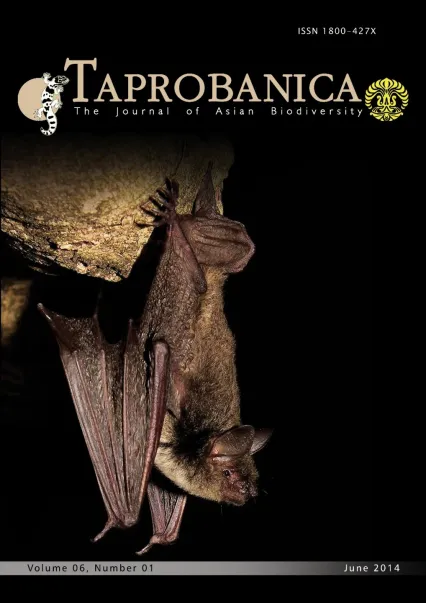

v6i1.134
Volume 6 | Number 1 | May 2014
Short Note
ISSN: 1800-427X (print)
eISSN: 1800-427X (online)
DOI:10.47605/tapro.v6i1.134
Submitted date: 4 January 2014
Accepted date: 25 April 2014
Published date: 29 June 2014
Pp. 63–65.
The highest elevation record of the brown long-eared bat (Plecotus auritus)
S. Thapa*, K.B. Shah & M. Chetri
*Corresponding author. E-mail: sanjan@smcrf.org
B.H. Hodgson collected the holotype in 1847, named it Plecotus homochrous, and labelled the animal as a male taken in the ‘central region of sub-Himalayas’ which does not necessarily mean Nepal and, in fact, may have been Darjeeling in India or Sikkim. Fleming collected a specimen (Sanborn 1950), most certainly from Nepal, which Sanborn labelled Plecotus homochrous. This specimen is retained in the collections of the Field Museum of Natural History (FMNH), Chicago, USA where its identity is listed currently as P. auritus homochrous (Pearch, 2011). Due to ambiguity of Hodgson's record we are treating Fleming's specimen as the first from Nepal. Bates & Harrison (1997) refers to the species as P. auritus. The genus Plecotus includes a number of cryptic forms and further investigation may well prove that even Plecotus auritus is comprised of more than one taxon .
Section Editor: Asoka Yapa
eISSN: 1800-427X (online)
DOI:10.47605/tapro.v6i1.134
Submitted date: 4 January 2014
Accepted date: 25 April 2014
Published date: 29 June 2014
Pp. 63–65.
The highest elevation record of the brown long-eared bat (Plecotus auritus)
S. Thapa*, K.B. Shah & M. Chetri
*Corresponding author. E-mail: sanjan@smcrf.org
B.H. Hodgson collected the holotype in 1847, named it Plecotus homochrous, and labelled the animal as a male taken in the ‘central region of sub-Himalayas’ which does not necessarily mean Nepal and, in fact, may have been Darjeeling in India or Sikkim. Fleming collected a specimen (Sanborn 1950), most certainly from Nepal, which Sanborn labelled Plecotus homochrous. This specimen is retained in the collections of the Field Museum of Natural History (FMNH), Chicago, USA where its identity is listed currently as P. auritus homochrous (Pearch, 2011). Due to ambiguity of Hodgson's record we are treating Fleming's specimen as the first from Nepal. Bates & Harrison (1997) refers to the species as P. auritus. The genus Plecotus includes a number of cryptic forms and further investigation may well prove that even Plecotus auritus is comprised of more than one taxon .
Section Editor: Asoka Yapa
- List of Articles & Contents





